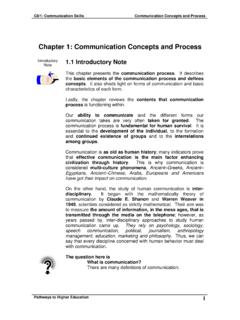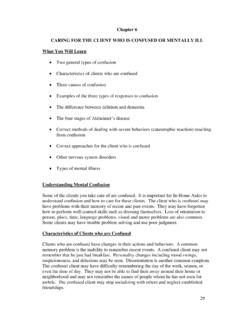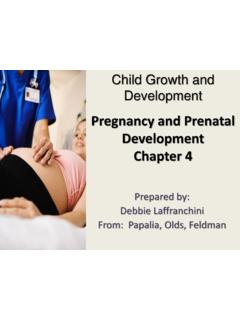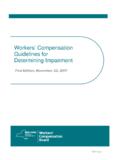Transcription of CHAPTER 2 Clinical diagnosis - WHO
1 Dengue haemorrhagic fever12 CHAPTER 2 Clinical diagnosisDengue virus infections may be asymptomatic or may lead to undifferentiatedfever, dengue fever (DF) or dengue haemorrhagic fever (DHF) with plasmaleakage that may lead to hypovolaemic shock (dengue shock syndrome, DSS)(Figure ).Dengue feverThe Clinical features of DF frequently depend on the age of the patient. Infantsand young children may have an undifferentiated febrile disease, often with amaculopapular rash. Older children and adults may have either a mild febrilesyndrome or the classic incapacitating disease with high fever of abrupt onset,sometimes with 2 peaks (saddle-backed), severe headache, pain behind theeyes, muscle and bone or joint pains, nausea and vomiting, and rash.
2 Skinhaemorrhages (petechiae) are not uncommon. Leukopenia is usually seen andthrombocytopenia may be observed. Recovery may be associated with pro-longed fatigue and depression, especially in some epidemics, DF may be accompanied by bleeding complications,such as epistaxis, gingival bleeding, gastrointestinal bleeding, haematuria, andFig. of dengue virus infectionChapter 2. Clinical diagnosis13 Table frequency of findings in classical dengue fever in adults andchikungunya and dengue virus infections in Thai children diagnosed ashaving haemorrhagic feveraChikungunyaDengue Classical denguefever in Thaihaemorrhagic feverFindingfever in adultsbchildrenin Thai childrenFever111111111111 Positive tourniquet test111111111 Petechiae or ecchymosis11111 Confluent petechial rash001 Hepatomegaly01111111 Maculopapular rash11111 Myalgia/arthralgia111111 Lymphadenopathy111111 Leukopenia1111111111 Thrombocytopenia1111111 Shock0011
3 Gastrointestinal bleeding101a1 5 1 25%; 11 5 26 50%; 111 5 51 75%; 1111 5 76 100%.bModified from Halstead SB et al. American journal of tropical medicine and hygiene, 1969, 18: 984 996,and refers mainly to Caucasian During outbreaks of DEN-1 infections in Taiwan, China, studieshave shown that severe gastrointestinal bleeding may occur in persons with pre-existing peptic ulcer disease. Unusually severe bleeding can cause death in suchcases. The case-fatality rate of DF, however, is less than 1%. It is important todifferentiate cases of DF with unusual bleeding from cases of DHF withincreased vascular permeability, the latter being characterized by haemocon-centration.
4 In many endemic areas, DF must also be differentiated fromchikungunya fever, another vector-borne virus disease of similar epidemiologyand overlapping distribution in much of Asia and the Pacific (see Table ).Dengue haemorrhagic feverTypical cases of DHF are characterized by four major Clinical manifestations:high fever, haemorrhagic phenomena, and often, hepatomegaly and circulatoryfailure. Moderate to marked thrombocytopenia with concurrent haemoconcen-tration is a distinctive Clinical laboratory finding of DHF. The major patho-physiological change that determines the severity of disease in DHF anddifferentiates it from DF is the leakage of plasma, as manifested by anDengue haemorrhagic fever14 Table constitutional symptoms observed inhaemorrhagic fever patients with dengue andchikungunya virus infectionaChikungunyaCriteriaDHF(%)Fever (%)Injected from Nimmannitya S et al.
5 American journal of tropicalmedicine and hygiene, 1969, 18: 954 significant under 6 5 erythrocyte volume fraction, the percentage of the volume of a bloodsample occupied by red blood haematocrit1 ( haemoconcentration), a serous effusion or with DHF commonly present with a sudden rise in temperatureaccompanied by facial flush and other non-specific constitutional symptomsresembling DF, such as anorexia, vomiting, headache, and muscle or bone andjoint pain. Some patients complain of sore throat, and an injected pharynx isfrequently evident on examination, but rhinitis and cough are infrequent.
6 Mildconjunctival injection may be observed (see Table ). Epigastric discomfort,tenderness at the right costal margin, and generalized abdominal pain arecommon. The temperature is usually high (.39 C) and remains so for 2 7days. Occasionally, temperature may be as high as 40 41 C; febrile con-vulsions may occur, particularly in 2. Clinical diagnosis15 The most common haemorrhagic phenomenon is a positive tourniquet test,easy bruising and bleeding at venepuncture sites. Present in most cases arediscrete fine petechiae scattered on the extremities, axillae, face and soft palate,which are usually seen during the early febrile phase.
7 Epistaxis and gingivalbleeding occur infrequently; mild gastrointestinal haemorrhage may be ob-served during the febrile liver is usually palpable early in the febrile phase and varies in size fromjust palpable to 2 4 cm below the costal margin. Although liver size is notcorrelated with disease severity, an enlarged liver is observed more frequently inshock than in non-shock cases. The liver is tender, but jaundice is not usuallyobserved. Splenomegaly is rarely observed in infants; however, the spleen maybe prominent on X-ray critical stage of the disease course is reached at the end of the febrilephase.
8 After 2 7 days of fever, a rapid fall in temperature is often accompaniedby signs of circulatory disturbance of varying severity. The patient may sweat,be restless, have cool extremities and show some changes in pulse rate andblood pressure. In less severe cases, these changes are minimal and transient,reflecting a mild degree of plasma leakage. Many patients recover spontane-ously, or after a short period of fluid and electrolyte therapy. In more severecases, when plasma loss is critical, shock ensues and can progress rapidly toprofound shock and death if not properly severity of the disease can be modified by early diagnosis and replace-ment of plasma loss.
9 Thrombocytopenia and haemoconcentration are usuallydetectable before the subsidence of fever and the onset of shock syndromeThe condition of patients who progress to shock suddenly deteriorates after afever of 2 7 days duration. This deterioration occurs at the time of, or shortlyafter, the fall in temperature between the third and the seventh day of thedisease. There are the typical signs of circulatory failure: the skin becomes cool,blotchy, and congested; circumoral cyanosis is frequently observed; the pulsebecomes rapid. Patients may initially be lethargic, then become restless andrapidly enter a critical stage of shock.
10 Acute abdominal pain is a frequentcomplaint shortly before the onset of is usually characterized by a rapid, weak pulse with narrowing of thepulse pressure (,20 mmHg ( kPa), regardless of pressure levels, 100/90 mmHg ( kPa)) or hypotension with cold, clammy skin and restless-ness. Patients in shock are in danger of dying if appropriate treatment is notpromptly administered. Patients may pass into a stage of profound shock, withthe blood pressure or pulse becoming imperceptible. However, most patientsremain conscious almost to the terminal stage.



















